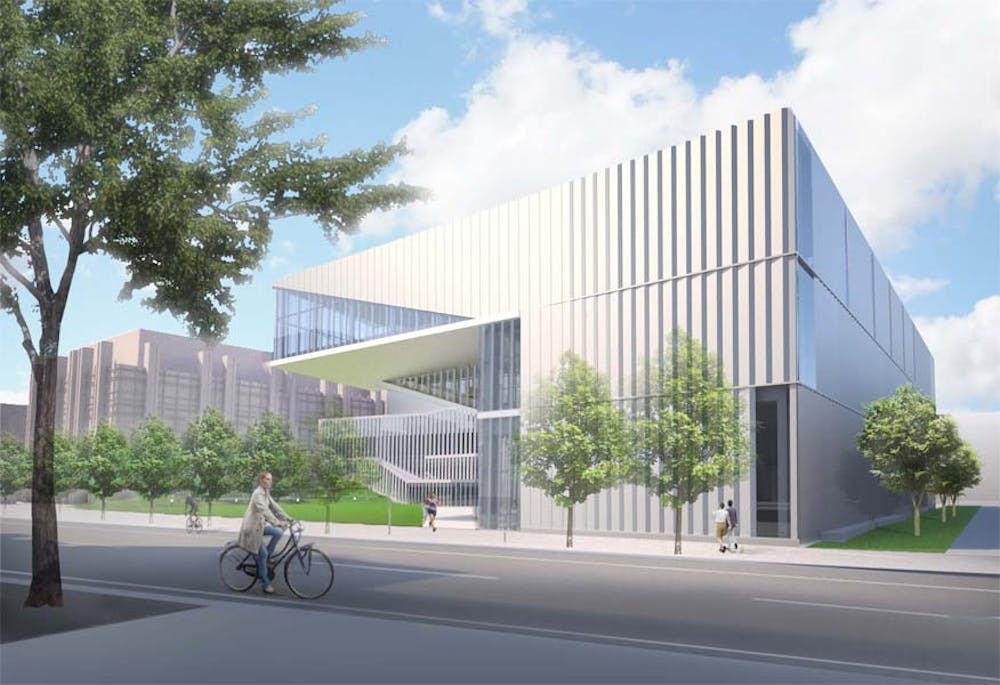The new gateway to Penn’s campus on Walnut Street is intricate, both in its design and the technology within.
The construction of the Krishna P. Singh Center for Nanotechnology, which broke ground in February 2011, is nearing its completion. Currently in its “punch list” phase, the University will start moving in equipment to the building on 33rd and Walnut streets in February. The grand opening for the $88 million state-of-the-art facility is scheduled for Nov. 7.
The building, which features a modern-looking exterior, was designed by New York-based architects Marion Weiss and Michael Manfredi.
“The science in here could be very happy in a windowless, anonymous building … but from the very beginning, that has not been the aspiration of the University,” said University Architect David Hollenberg.
“This summer, the building will really be coming to life from Walnut Street,” Christopher Kern, director of design and construction at Facilities and Real Estate Services, said. “It has a really nice presence, and it’s a really nice signature piece for coming into campus.”
The Singh Center’s complex design, which features a second-level overhang, as well as the specifications that research in nanotechnology demands, has made its construction very difficult.
“This was especially complex because it’s not like a building we’ve ever done before — it’s not a classroom building, it’s not a conventional building, the science in it isn’t conventional and the equipment isn’t conventional,” Hollenberg said. “It required a very high degree of coordination with the people who are going to use it.”
The University plans to take occupancy in February, when it will start transporting microscopes from the adjacent Edison building into the basement of the new nanotechnology center.
1/9/2013: New classrooms open in Steinberg-Dietrich Hall
1/8/2012: Addams family silhouette gets a makeover family silhouette gets a makeover
Hollenberg explained, “These are massive and delicate pieces of equipment, so it’s going to take many months to move that stuff in there.”
This process will be done with a great deal of care in order to “minimize the disruption to any research that relies on those microscopes,” he added.
The planning behind the Singh Center also focused largely on sustainability. According to FRES, a large portion of the new building will have a green roof. Moreover, the Singh Center has been constructed with renewable materials and largely local purchases.
The university is aiming to receive a Leadership in Energy and Environmental Design Silver certification for the building.
The building will also feature artwork by artists Casey Reas, Hilla von Rebay, Jaume Plensa and Tony Smith.
“Typically you wouldn’t see sophisticated artwork inside of a research building like this,” said Michael Dausch, executive director of Design and Construction Management at FRES.
Overall, students expressed that they were looking forward to the completion of the Singh Center.
Engineering freshman Daniel Salowe said, “I am really excited to see how the new nanotechnology center will be integrated into the engineering community.”
“I am looking forward to it if I do get to use some of the instruments there,” said Sharon Wang, a third-year graduate student in the Material Science and Engineering department. “It’s definitely going to put our engineering school and … Penn at the front of our field in science and engineering.”



